In the Science Corner blog series, Ph.D. student Coral Chell reviews recent scientific papers and examines their importance for lemur conservation. In this post, she reviewed “Tropical Field Stations Yield High Conservation Return on Investment”, published in Conservation Letters.
“Thousands of field research stations worldwide are at the frontline of biodiversity conservation….. [but] their value to national and international biodiversity conservation efforts is often not recognised.”
Tropical Field Stations: The Frontline for Conservation?
Funding within global conservation is limited, meaning creating cost-effective conservation solutions with a high return on investment is crucial. Field stations worldwide are viewed by many as the ‘frontline’ of biodiversity conservation. Largely as a response to their links with significant advances in conservation, education and research. However, these successes often go unrecognised and this has led to funding cuts and reduced investment by governments and organisations, particularly since the onset of the COVID-19 pandemic.
Why are the clear successes of tropical field stations not recognised in the way they should be?
This could be due to the measures used by funders to assess their successes. Many large-scale funding agencies are most interested in conservation return on investment (CROI) — a quantitative conservation outcome measured against the fiscal cost of providing that outcome. This means that a project needs to show outcomes that are worth the money put into them. For a lot of conservation projects, this either isn’t well-understood or documented, or they are just very difficult to assess.
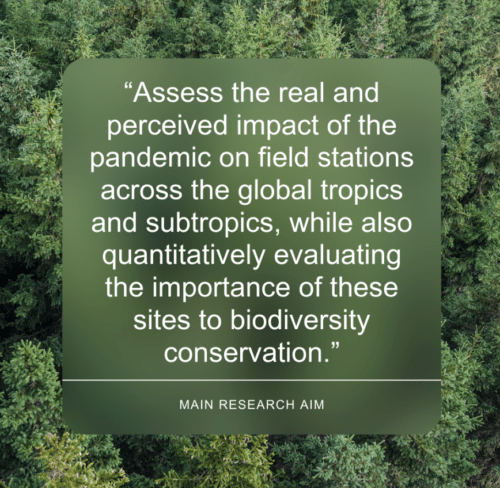
Research Questions
This 2024 study aimed to assess field stations’ conservation return on investment and explore the impact of COVID-19 on the tropical field stations.
Methods
The authors of the paper surveyed the leaders and directors of various field stations across the tropics, with a particular focus on field stations in primate-range countries. Why primates? Well, primates are key to conservation and are considered critical to overall tropical ecosystem functioning.
The 70-question survey included questions that were both objective (such as location) and subjective (such as the likelihood of closure or impact of conservation programs). Respondents were also asked for an estimated median annual costs so the ‘direct conservation effect’ could be calculated.
In addition to this survey, spatial analysis was carried out. With this analysis, the authors hoped to:
- estimate the number of species impacted by the field station, and
- estimate forest cover loss in and around the field station.
Improved Habitat Quality, Reduced Hunting Rates and Reductions in Deforestation
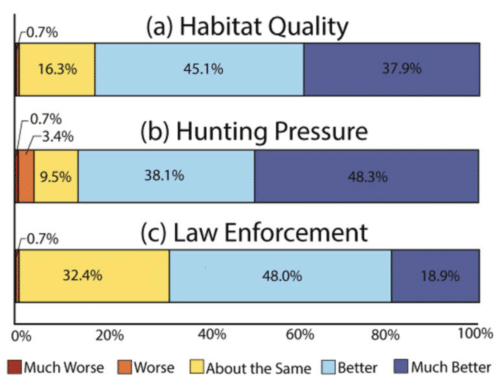
A total of 157 field stations across 56 countries were surveyed, with 62% of these countries being where primates occur. From the questions asked it was found that most respondents believed the presence of ‘their’ field station improved habitat quality (83%), reduced rates of hunting (86%) and improved enforcement of the law with regard to wildlife use/extraction (67%).
In addition, it was calculated that in a ‘normal’ year (i.e pre-COVID-19) the field stations were used collectively by 725-3315 researchers and anywhere from 330-1255 scientific articles were published.
The field stations surveyed potentially overlapped with 1215 terrestrial vertebrate species listed on the IUCN Red List, with the majority found in Africa (499), Asia (377), and then the neotropics (342). Finally, despite global increases in deforestation levels, when focusing on areas surrounding field stations it was found that forest cover loss is significantly less and there has been 17.6% less deforestation overall near field stations.
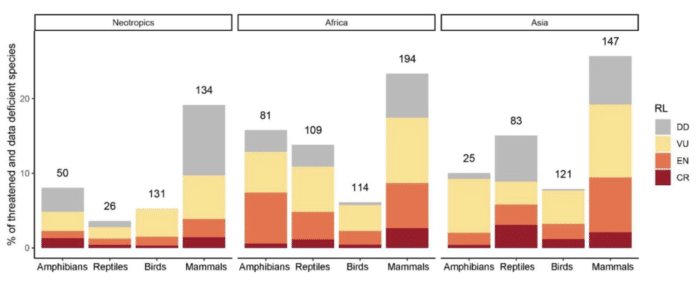
The Impact of COVID-19 on Field Stations
The COVID-19 pandemic has had, and continues to have, a huge impact globally, across all sectors. However, conservation, particularly in the tropics, was severely impacted (Gibbons et al. 2021). This study found the COVID-19 pandemic led to nearly half (48%) of the field stations surveyed to close partially or completely from March 2020 to June 2022. Additionally, at the time of the survey nearly one quarter (22%) of stations still remained partially or completely closed.
When focusing on funding since March 2020, 50% of the field stations surveyed have ‘less’ or ‘much less’ funding than prior to the COVID-19 pandemic. This will have had big impacts on the conservation, education, and research efforts at these sites.
What does this mean for the future of conservation?
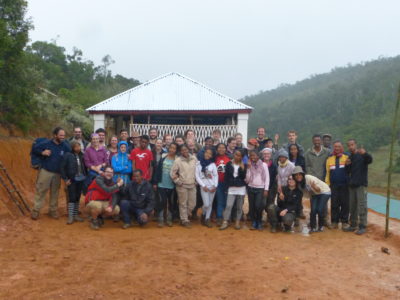
This study shows that field stations are viewed to improve habitat quality, deter illegal natural resource extraction, and reduce deforestation in tropical regions. From calculations, it was found that these benefits cost a median US$637 per square kilometer. This is half of the global mean budget for protected areas!
Overall, this gives field research stations a strong positive conservation return on investment (CROI). This means that they are more than worth the money that’s invested into them!
This study provides the CROI for multiple different field stations across the tropics, and shows their clear benefits to conservation. It also provides a method that can be used to effectively quantify the CROI for other conservation research-focused field stations. This is key when creating and adopting international policy frameworks that address the global biodiversity crisis.
“While field stations alone cannot ensure the persistence of species, we found that they are more successful at protecting local wildlife populations, among other clear and quantifiable conservation benefits at a relatively low cost.”
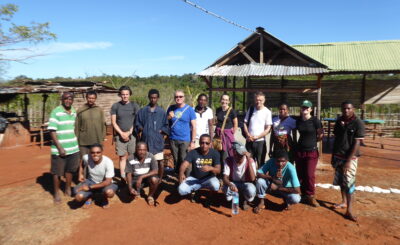
How do field stations impact conservation in Madagascar?
Dr. Seheno Andriantsaralaza, Madagascar Manager of the Lemur Conservation Network, states,
“Field stations in Madagascar are key for monitoring lemurs, surveying lemur populations, and advancing solutions for lemur conservation. Lemurs face increased threats due mainly to their habitat loss, and ecological surveys of lemurs cannot be done properly without field stations.
Also, field stations in Madagascar are incredible because have played important roles in the collaboration between Malagasy and non-Malagasy primatologists and conservationists.”
Research Summary
In review, funding within the conservation sector is limited, and creating cost-effective conservation solutions with a high return on investment is crucial. This study focused on field stations’ conservation return on investment (CROI) and explored the impact of COVID-19 on tropical field stations.
Overall, it was found that field stations improved habitat quality, deterred illegal natural resource extraction, and reduced deforestation in tropical regions. Additionally, calculations found field research stations to have a strong positive CROI.
This study highlights very clearly the positive impact that field stations have on conservation. This information is critical when adopting international policies to address the global biodiversity crisis.
Personal Highlight
It’s not very often you get to see the real numbers for the impact of conservation efforts due to their longitudinal nature. So for me, this was something I LOVED about this paper! Some figures that stuck out for me were regarding the number of researchers and the types of visitors and conservation professionals that were hosted at the field stations.
The field stations were used by 725 to 3,315 researchers and were also used by students (83%), volunteers (60%), trainees or apprentices (47%), tourists and the general public (36%), and patrol guards, rangers, or other park authorities (11%). These are such incredible numbers and show the clear impact these sites have for conservation efforts!
Sources Used
- Eppley, T. M., Reuter, K. E., Sefczek, T. M., Tinsman, J., Santini, L., Hoeks, S., … & Serio‐Silva, J. C. (2024). Tropical field stations yield high conservation return on investment. Conservation Letters, e13007.
- Eppley, T. M., Reuter, K. E., Sefczek, T. M., Tinsman, J., Wright, P. C., & Mittermeier, R. A. (2022). Field research stations are key to global conservation targets. Nature, 612(7938), 33-33.
- Gibbons, D. W., Sandbrook, C., Sutherland, W. J., Akter, R., Bradbury, R., Broad, S., … & Ockendon, N. (2022). The relative importance of COVID‐19 pandemic impacts on biodiversity conservation globally. Conservation Biology, 36(1), e13781.
